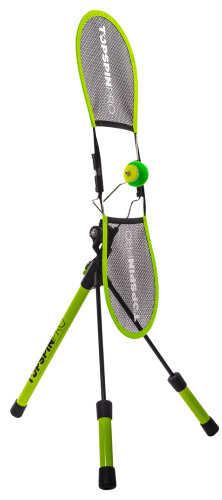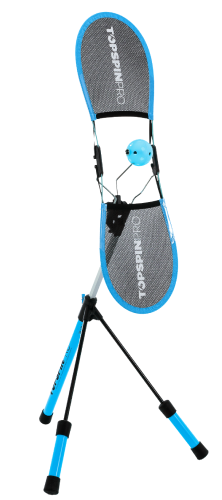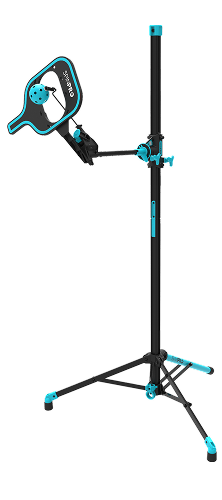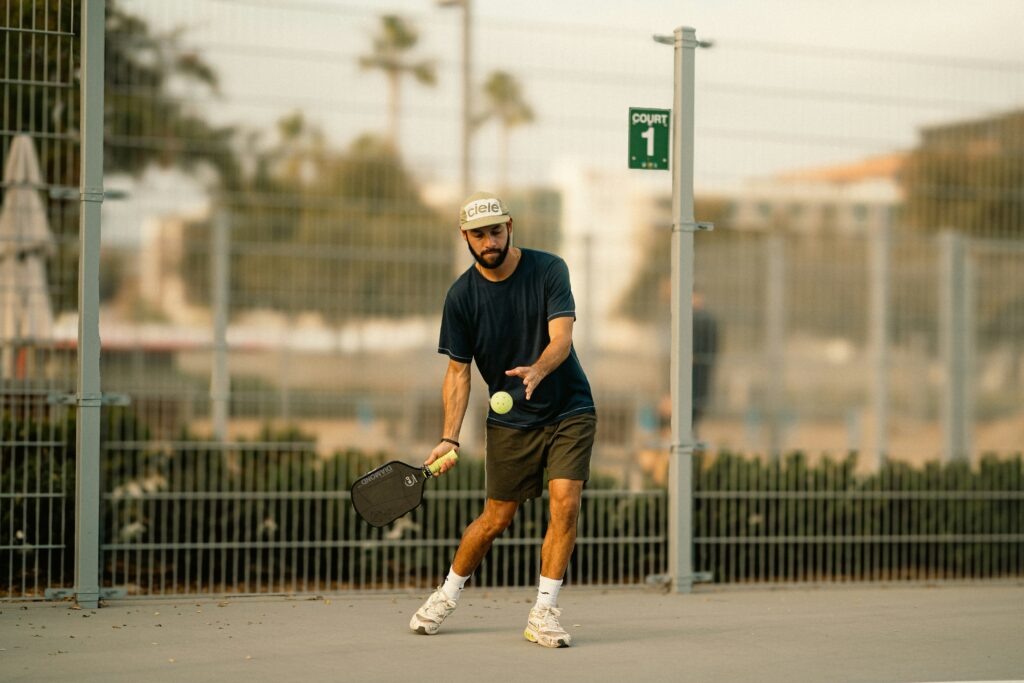The pickleball serve is one of the most important shots in the game, yet ironically, it’s also the most neglected. Watch any drilling session and you’ll see players practicing their thirds, resets, volleys, and drives, but rarely the serve. That’s a mistake. The serve sets the tone from the very first shot. An intentional serve can immediately put opponents under pressure and sometimes even earn you a free point. On the other hand, if your serve is nothing more than a gentle rally starter, you’re handing control to your opponents. They’ll step in, take the return early, and charge the net with aggression, leaving you instantly on the defensive.
The good news? Fixing your serve doesn’t take months of grinding. With the right adjustments, you can add power, consistency, and strategy fast.
Ways You Can Attack Using The Pickleball Serve
There are a number of ways you can attack using your pickleball serve and not just using power:
DEPTH - Serve deep with topspin to push your opponent behind the baseline and stop them coming in.
POWER - Add power and topspin to cut down your opponent’s reaction time and also the time that have to approach the net.
PLACEMENT - Attack weaker sides (often backhand) or move the player around if they are not so strong with their footwork.
SPIN - Use slice serves for a low bounce that forces your opponent into awkward returns. It can also be used to swing the ball into the body or out wide. Use topspin with power or height to push them back and reduce their reaction time.
For an in-depth look at attacking with the serve read: How To Attack With Your Pickleball Serve
Signs of a Weak Pickleball Serve
If you are not sure about the strength of your pickleball serve then here are some signs of a weak one:
❌Travels at the same pace every time
❌Lands in a similar place each time
❌You can’t control the placement
❌The height doesn’t vary
❌Your opponents are moving to the net fast after the return
❌Your opponent has no problem hitting any type of return off your serve
❌You miss more than 2 in 10, or you never miss.
If any of these sound familiar, don’t worry. Even by adding some tactical changes, you can transform your serve very fast. Let’s look more in-depth at some of the ways you can fix your pickleball serve and how to improve your weakness:
How To Improve Your Serve
1. Power
Even though we are looking at power first, it is not the most important way to improve your serve. It can, however, completely change the flow of a pickleball game when used correctly. Unfortunately, many players struggle to generate consistent power or they rely only on arm strength, which quickly leads to inconsistency or fatigue. Here are the most reasons people struggle to get power and how to solve them:
Too Much Arm Tension
- Problem: Many adult players grip the paddle too tightly or tense up their arm, which drastically reduces swing speed. The key to top level power is keeping the arm loose.
- Fix: Stay relaxed! Keep a loose grip (think of holding a tube of toothpaste without squeezing it). A relaxed arm acts like a whip, generating effortless speed and power.
Poor Contact Point
- Problem: Hitting the ball too close to your body or too far back robs you of leverage and a clean contact. It's also harder to apply spin.
- Fix: Make contact out in front, in what’s often called the “power zone.” Ensure your toss (or drop) is slightly forward and away from your body so you can strike cleanly.
No Weight Transfer
- Problem: Serving flat-footed or leaning back at contact reduces drive. If body weight transfers through the ball at contact it will help generate a lot more power.
- Fix: Step in after contact or lean naturally into the serve. As you strike, let your weight flow forward through the shot, this adds momentum without extra effort.
Lack of Body Rotation
- Problem: Lack of body rotation limits power and puts extra strain on your arm and shoulder. By using the larger muscles of the torso together with the arm through the service action you can generate more power and spin.
- Fix: Rotate your torso and shoulders through the swing. Your core is where the big muscles are, so let them generate the power and transfer it into the paddle.
Predictable Speed
- Problem: Even if you hit hard, if every serve is the same speed, opponents adapt quickly. Mixing up speed with depth and placement will make it very hard for your opponents to find their rhythm.
- Fix: Mix it up! Add variety to keep opponents guessing.
2. Depth
Depth is more important than power for pressuring the other team. A deep serve pushes opponents back, making it harder for them to step into the return and rush the net. If your serves land short, you’re giving them a huge advantage. Here’s how to fix it:
Predictable Depth
- Problem: Many players swing with the same swing speed and placement each time resulting in predictable depth.
- Fix: Be confident changing up both the height and speed to adjust depth and keep opponents on the back foot.
Too Low
- Problem: Many players “just get it in,” which leads to low-to-medium height serves that drop mid-court.
- Fix: Aim with purpose. Pick a target area 1–2 feet from the baseline and trust your swing.
No Use of Legs
- Problem: Standing flat-footed reduces the drive behind the ball. Using your legs is key to getting good height and depth.
- Fix: Use a small knee bend and push forward as you strike. The legs add free depth without extra arm effort.
Fear of Missing
- Problem: Many players serve “safe” to avoid faults. That often results in tentative, weak serves that drop short. To serve consistently deep you have to remove the fear of missing and therefore that tightness.
- Fix: Practice under pressure. Train to hit aggressive, deep serves so that “safe” actually feels easy.
3. Placement
Placement is central to keeping your opponents guessing and also having the ability to attack with more variety. Here are some of the common struggles with placement:
Predictable Placement
- Problem: Predictable placement doesn't just come from a lack of control, it can be the fear of missing and also lack of tactical variety. Make sure that if you have the ability to move the ball around that you take advantage.
- Fix: Remember it's just a game and you won't improve if you don't attempt for variety. Playing it safe might win you the current game but won't improve you long term.
Lack of control
- Problem: Many players just swing at the ball without the ability to place it in different areas of the service box. This is great in terms of consistency but not for pressuring your opponents. Having the ability to make them move, to attack their weaker side and keep it unpredictable are crucial to playing at 4.5 and above.
- Fix: Practice with targets and zoned areas on the court to get consistent with placement.
Missing too much or not enough
- Problem: If you aren’t missing serves at all, then that is a sign you are being too conservative with your swing. Many pro’s aim for an 80% success rate. This allows them to go after their serve, win the occasional free point, and still maintain pressure throughout the match. On the flip side, if you’re missing too many serves, it’s a sign that your consistency and placement need attention. Without reliability, even a powerful or tricky serve won’t help you win matches.
- Fix: Use zones or markers in the service box to challenge your accuracy. The goal is to push your limits, aggressive enough to cause trouble for opponents, but steady enough that you don’t give away free points.
4. Spin
Spin is one of the most challenging but also the most rewarding elements of the serve to master. While power and placement can win you points, spin adds an entirely new layer of difficulty for your opponents. A spinning serve bounces unpredictably, often kicking higher, skidding lower, or curving off to the side. This forces opponents to adjust their timing, contact point, and footwork, making errors more likely. Beyond simply making returns harder, spin also enhances power, depth and placement.
Incorrect Swing Path
- Problem: One of the most common mistakes players make when trying to add spin to their serve is over-exaggerating the swing path. They’ll often flick the wrist too aggressively, chop straight across the ball, or create a jerky motion in an attempt to “force” spin. This can increase injury risk and also makes the swing inefficient and ineffective.
- Fix: The key is to develop a clean, efficient swing path. Training tools like the TopspinPro or SpinPro can help you groove the correct motion safely, giving you the feel of spin without the temptation to over-exaggerate. Below is an example of how to learn a sidespin serve on the SpinPro:

Open/Closed Paddle Face
- Problem: It's common for players to exaggerate their paddle face when trying to apply spin.
- Fix: Most shots in pickleball don't require that and actually need a flatter paddle face. The spin is then applied through swinging either up or down the back of the ball. Here's an in-depth guide to Topspin Vs Slice In Pickleball
Lack of Acceleration
- Problem: It's easy to tense up and decelerate your swing when you're not confident. Spin requires an acceleration of the paddle to generate the ball rotation.
- Fix: Roll the ball with confidence and acceleration. We have a topspin course to help you master all of your shots with confidence. See the video below:

Final Takeaway
A weak serve doesn’t have to stay weak. Most problems come down to simple fixes such as better contact, deeper placement, smoother weight transfer, and confidence. By putting in focused reps and mixing in a few strategic upgrades like spin and placement, your serve can go from a liability to a weapon in just a few weeks. Remember...the serve is the only shot in pickleball you have full control over. Master it, and you start every point with the upper hand.
Enjoyed this article?
Be sure to sign up for our newsletter and we'll keep you up to date about new posts



